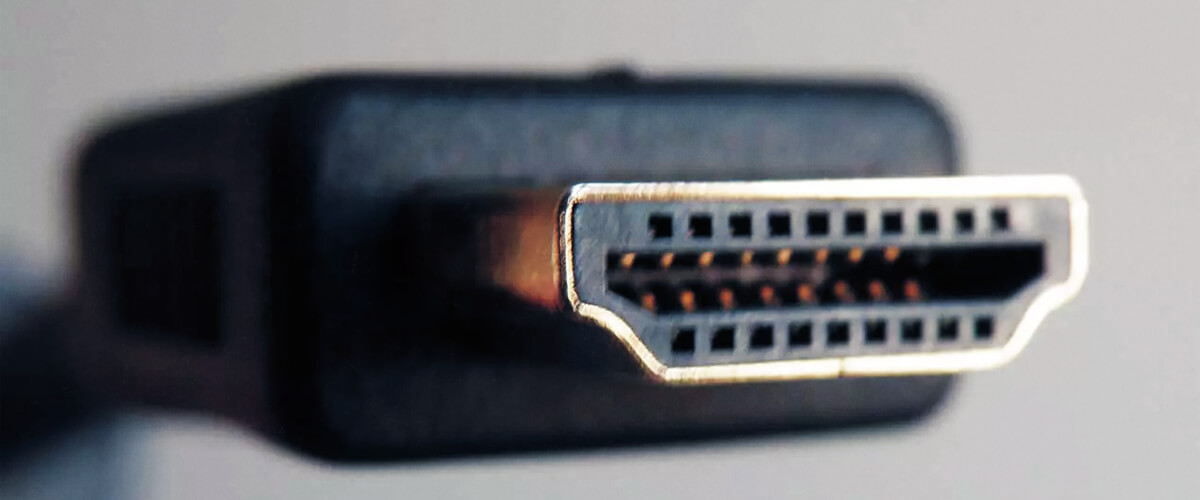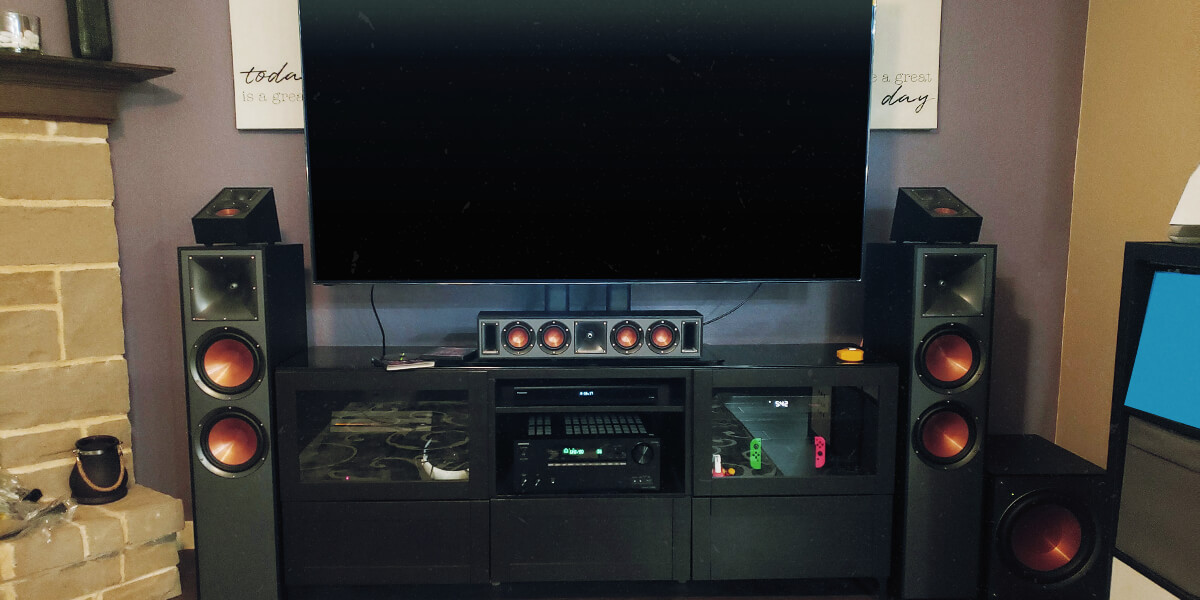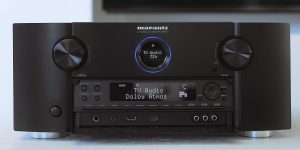High-bandwidth Digital Content Protection (HDCP) plays an important role in modern AV receivers, ensuring the secure transmission and display of digital content while providing an optimum audio-visual experience. In addition, HDCP compliance is essential for those looking to enjoy high-quality copyrighted material without legal concerns. In this article, I will explain the purpose of HDCP-compatible receivers and the function of this standard, with a particular focus on the latest version, HDCP 2.3.
Understanding HDCP: purpose and role

To fully grasp the significance of HDCP 2.3 compliance in AV receivers, it’s important to comprehend the function and HDCP’s meaning.
HDCP explained
The main goal of HDCP is to protect the rights of content creators and distributors by ensuring that digital content is only played or displayed on HDCP-compliant devices. This technology encrypts the data during transmission between devices, such as from a Blu-ray player to a TV or projector, so that only authorized devices with the correct decryption keys can access and display the content. It’s used to secure data transmissions in several common digital interfaces, including HDMI, DisplayPort, and DVI, among others.
If you try to play HDCP-protected content on a device that doesn’t meet HDCP compliance, like an outdated receiver or TV, the device may be unable to read the content. This could result in a blank screen or an error message indicating that the content is incompatible with the device. I suggest you keep in mind that content providers may not be responsible for any problems that occur when attempting to play HDCP-encrypted content on devices that don’t meet HDCP compliance.
The mechanism of HDCP content protection
HDCP content protection relies on an authentication process between the devices involved. For example, a Blu-ray player connecting to an HDCP-supporting TV. The authentication process involves a handshake to verify compliance and encryption keys. Once authenticated, the devices can exchange keys and encrypt/decrypt the digital content, securing it during transmission. It helps to prevent unauthorized copying and distribution of protected content, which is vital for the creators and distributors.
However, HDCP prevents high-quality protected content transmission between the devices if the authentication fails. In such cases, there are two possible outcomes:
- The source device can transmit a lower-quality content version, maintaining the content’s security. This may involve reducing the resolution, altering the aspect ratio, or modifying the color depth, depending on the content and devices.
- In some cases, the source device may completely block playback if authentication fails. This ensures that unauthorized devices or users cannot access protected content.
Therefore, to get the full benefits of HDCP protection, I highly recommend making sure that both source and destination devices are HDCP compatible.
The evolution of HDCP versions
To fully comprehend HDCP, it’s beneficial to track its progress through different versions and HDCP content protection standards over time. This will lead to the examination of the latest version, HDCP 2.3, and its advancements that make it important to contemporary AV receivers.
History of HDCP:
HDCP was initially introduced in 2000 to secure digital content transmitted over DVI connections. Since then, it has undergone various revisions to address new technologies, security threats, and changing content protection needs.
Key updates and improvements in each version:
| Version | Key Features |
|---|---|
| HDCP 1.0 | Secured DVI connections; basic encryption and authentication processes |
| HDCP 1.1 | Additional security measures; “man-in-the-middle” attack prevention; added HDMI connection support |
| HDCP 1.2 | Improved authentication process; expanded compatibility with HDMI devices |
| HDCP 1.3 | Enhanced encryption algorithm; strengthened content protection |
| HDCP 1.4 | Provided support for DisplayPort interfaces |
| HDCP 2.0 | New protocol; increased security; supported wireless and IP-based transmission methods |
| HDCP 2.1 | Addressed security vulnerabilities in HDCP 2.0 |
| HDCP 2.2 | Added support for 4K and UHD content; robust security and encryption methods |
HDCP 2.2 vs. HDCP 2.3: key differences
As HDCP continues to evolve, each new version brings improvements in security, protection mechanisms, and support for emerging display technologies. HDCP 2.3, released in 2018, is the most recent version of HDCP and offers several enhancements over its predecessor. Key updates in HDCP 2.3 include:
- Improved Security: HDCP 2.3 introduces enhanced encryption methods, bolstering the security of digital content against unauthorized copying and distribution.
- Strengthened Authentication: The authentication process has been fortified for better protection against potential attacks, ensuring only compliant devices can access and display protected content.
- Expanded Support: HDCP 2.3 offers broader support for high-resolution content and emerging display technologies, such as 8K resolution and High Dynamic Range (HDR) formats.
Let’s see the key differences between HDCP 2.2 and the latest version, HDCP 2.3
| Feature | HDCP 2.2 | HDCP 2.3 |
|---|---|---|
| Security Enhancements | Basic encryption and authentication techniques (AES 128-bit) | Advanced encryption techniques for increased security (AES 256-bit) |
| Authentication Protection | Some protection against authentication attacks (time-based authentication) | Improved protection against potential authentication attacks (time-based with additional security layers) |
| High-Resolution Content Support | Supports 4K and HDR content (4K Blu-ray movies) | Supports 4K, 8K, HDR, and other high-resolution content (8K streaming) |
| Display Technologies | Limited support for new display technologies (4K TVs) | Enhanced support for emerging display technologies (8K TVs and beyond) |
| Future-Proofing | Provides compatibility with some new devices and formats (4K gaming consoles) | Ensures readiness for future content formats and technologies (8K gaming consoles and upcoming formats) |
| Content Streaming Compatibility | Supports popular streaming services (Netflix, Hulu) | Improved compatibility with the latest streaming services and platforms (Apple TV 4K, Amazon Prime Video) |
| Backward Compatibility with Older HDCP | May not be backward compatible with older HDCP versions | Ensures compatibility with both newer and older HDCP versions (able to work with both HDCP 1.4 and HDCP 2.2 devices) |
The benefits of HDCP 2.3 compliant AV receivers

Now, let’s focus on how these devices can improve your home theater experience.
- Enhanced Content Security.
- HDCP 2.3 AV receivers use advanced encryption for better content protection, preventing unauthorized copying and distribution. This ensures a legal and ethical content consumption experience.
- Support for Premium Content Quality.
- Such models handle high-resolution formats like 4K, 8K, and HDR, providing an immersive viewing experience. HDCP 2.3 ensures secure transmission and display of high-quality content from streaming services and gaming consoles.
- Compatibility with Cutting-edge Devices.
- HDCP 2.3 receivers work seamlessly with the latest devices, such as 4K Blu-ray players and next-gen gaming consoles. This compatibility simplifies the setup and operation process, ensuring smooth integration with your home theater system.
So, investing in an HDCP 2.3-compliant AV receiver can significantly improve your entertainment experience while maintaining the integrity and security of digital content.
The impact of HDCP 2.3 on streaming services and gaming devices

In today’s digital age, streaming services have become an integral part of our entertainment consumption. Understanding the role of HDCP 2.3 compliance in these services is helpful for ensuring seamless access to premium content and optimizing your viewing experience.
HDCP 2.3 compliance and popular streaming platforms
Major streaming services such as Netflix, Amazon Prime, and Disney+ have implemented HDCP 2.3 to protect their high-quality digital content from unauthorized copying and distribution. By requiring HDCP 2.3 compliance, these platforms can ensure that their premium content, including 4K, HDR, and other high-resolution formats, is accessible only to users with compatible devices.
When you use a compliant AV receiver, you can enjoy the highest quality content available on these streaming platforms without any restrictions. On the other hand, non-compliant devices may face playback limitations, such as being limited to lower-quality streams or experiencing complete playback denial. In some cases, streaming platforms may display error messages, notifying users that their devices are not HDCP 2.3 compliant and need to be upgraded to access the desired content.
Gaming and HDCP 2.3 compliance
In the realm of gaming, HDCP 2.3 compliance plays a vital role in ensuring a consistent and enjoyable experience across different devices. From protecting gaming content to facilitating seamless integration with gaming consoles, HDCP 2.3 compliance enhances your gaming experience significantly.
Also, by investing in an HDCP 2.3-compliant AV receiver, you can enjoy several benefits that contribute to a superior gaming experience. These benefits include:
- Enhanced graphics and audio quality: HDCP 2.3 compliance allows your AV receiver to support the latest high-resolution gaming content, resulting in more detailed and immersive visuals and audio, elevating your gaming sessions to new heights.
- Smooth integration with gaming consoles: HDCP 2.3 compliant AV receivers are designed to work seamlessly with modern gaming consoles like PlayStation 5 and Xbox Series X, ensuring effortless setup and operation.
- Future compatibility with upcoming gaming devices: As new gaming devices and technologies emerge, HDCP 2.3 compliance ensures that your AV receiver can support them.
Conclusion and key takeaways
With this article, I hope I’ve managed to deliver the significance of HDCP 2.3 compliance in modern home theaters, emphasizing its role in content protection and enhancing your entertainment experience. To summarize, HDCP 2.3 compliance is vital for optimal audio-visual experiences, safeguarding creators’ rights, and ensuring legal content consumption. Furthermore, staying informed about content protection technologies, such as HDCP, is important as technology advances to maintain a state-of-the-art home theater system.




![Best 2-Channel Receiver [Expert Reviews and Buying Guide]](/wp-content/uploads/2023/11/best-2-channel-receiver-stereo-300x150.jpg)












